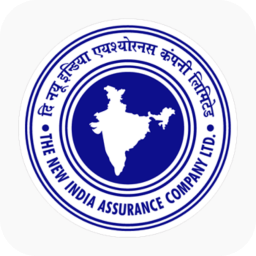Introduction
Before we start comparing these two policies we have to set out some ground rules.
Both products are marketed by different insurance companies. Arogya Premier is sold by SBI and Floater Mediclaim is sold by New India Assurance. So any meaningful comparison should include a comparison of the product alongside the insurers themselves.
Second, we know that both products are quite basic in their structure. They offer modest protection and aren’t comprehensive enough to cover a wide array of use cases. So if you are looking for something more robust, then both these policies may not cut it.
And finally, any comparison is ultimately futile without considering the use case. Who are you buying this policy for? You, your family, your parents?
That’s something you’ll need to answer before using this guide. So with that introduction out of the way, we can get to comparing the actual policies themselves.
Let’s start with Arogya Premier. The product comes from SBI’s stable:
SBI General Insurance Company Limited is a joint venture between the State Bank of India and Insurance Australia Group (IAG). The firm, which was founded in 2008, offers insurance products in the areas of auto, travel, home, and health.
However considering they are a part of India’s largest government-owned banking firm, you can expect a bit of dilly-dallying during the claims process. And their claim settlement ratio of 92.62% isn’t something to boast of either.
Floater Mediclaim meanwhile comes from New India Assurance’s stable:
New India Assurance, is a government-owned insurance firm that was established in 1919. Their insurance portfolio includes Health, Motor, Travel, and Marine products. But despite being in the business for so long, they’re not the most efficient when it comes to processing your application and dealing with your claims.
And that means, even with a relatively high claim settlement ratio and 3,000 network hospitals, the company isn’t exactly a stellar performer.

Talk to IRDAI-certified experts
If you want help with selecting the best health policy tailored to your needs, book a FREE call with our experts today by clicking here.
Compare Insurances | ||
|---|---|---|
| Network hospitals | 10,926 | 3,139 |
| Claim settlement ratio (avg. of last 3 years) | 92.62% | 99.92% |
| Co-payment | No | No |
| Room rent | Any Room | Any Room (up to 1% of sum insured) |
| Disease sub-limit | No | No |
| Pre existing diseases waiting | 4 years | 4 years |
| Pre/Post hospitalization | 60/90 days | 30/60 days |
| No claim bonus | 10% per year (up to 50%) | 25% per year (up to 50%) |
| Domiciliary | ||
| Ayush treatments | ||
| Restoration benefit | 100% restoration (once for different illness) | |
| Health check-up | Once every 4 years | |
| Maternity | Available (up to sum insured) | |
| Out Patient Department | ||
| Day care |
Feature Comparison


Co payment
With a co-payment clause, the insurer will mandate that you pay a part of the bill. So if the bill adds up to Rs. 2,00,000 and the co-payment is set at 20% then you could be asked to pay Rs. 40,000 from the bill. In this case, however, Arogya Premier doesn’t impose a co-payment clause. And neither does Floater Mediclaim.


Room rent
If the policy does impose room rent restrictions then the insurer may only let you stay in a room of a certain specification or impose a cap on the total room rent. If you were to breach either criterion then the insurance company may ask you to pay a portion of all the expenses you incurred while staying in the room. In this case, however, you can pick any room you want with Arogya Premier but Floater Mediclaim only lets you stay in a room whose rent doesn’t exceed 1% of the total sum insured.


Sub limits
Some policies will tell you that they will cover all medical expenses up until the sum insured, but then impose caps on the total costs you can incur while dealing with a very specific list of diseases. We call these caps “Disease Wise Sub Limits.” In this case, neither Arogya Premier imposes disease-wise sub-limits nor does Floater Mediclaim


Waiting periods for pre-existing diseases:
If you’re suffering from a lifestyle condition or if you’ve had surgery in the past, or if you’re dealing with an acute or chronic illness at the time of buying the policy, then the insurer may classify this as a pre-existing disease. And they may tell you that they will only cover these illnesses after some time. This cooling period is referred to as the Pre-existing-disease waiting period. In this case, Arogya Premier imposes a 4 year waiting period on pre-existing diseases and Floater Mediclaim will similarly tell you to wait 4 years before making a claim related to your pre-existing diseases


Pre and post Hospitalization expenses
Most people aren’t hospitalized right off the bat. Instead, they’ll have to go through a whole series of diagnostic tests before hospitalization and take medication post-discharge. These costs are outlined as pre-hospitalization expenses and post-hospitalization expenses respectively. In this case, Arogya Premier covers expenses incurred 60 days before hospitalization and expenses incurred 90 days post-hospitalization. Meanwhile, Floater Mediclaim covers expenses incurred 30 days before hospitalization and expenses incurred 60 after hospitalization, although there may be different sub-limits


No claim bonus
Some policies will tell you that they will incentivize you for not making a claim in any given year. And they offer such incentives by offering extra cover on top of the existing sum insured. This extra cover is categorized as a no-claim bonus. In this case, however, Arogya Premier offers a no-claim bonus of 10% whereas Floater Mediclaim offers a no-claim bonus of 25%. And the no-claim bonus may be capped at different levels too.


Domiciliary
Imagine you are forced to treat yourself at home because you don’t find a hospital bed, or you have a chronic condition that prevents you from visiting one, then, insurers may choose to cover your treatment even if you’re hospitalized at home. And such costs are collectively categorized as domiciliary treatment costs. In this case, however, Arogya Premier offers domiciliary cover whereas Floater Mediclaim doesn’t offer domiciliary protection.


Ayush treatments
Most policies only cover treatments administered in a registered medical facility. However, on some occasions, you may want to pursue alternative treatments including homoeopathy, Ayurveda, Unani and Siddha. These treatments are collectively categorized as Ayush treatments. And in this case, Arogya Premier covers Ayush procedures and Floater Mediclaim also extends coverage for Ayush treatments.


Maternity benefits
If you’re hospitalized during childbirth, then you may have to incur significant costs during delivery of your newborn, child care and other related matters during the course of the hospitalization. These costs are collectively termed maternity costs. And in this case, however, Arogya Premier offers maternity cover whereas Floater Mediclaim doesn’t offer protection for maternity-related hospitalizations.


Out Patient Department (OPD)
Doctor visits and regular consultations aren’t usually covered by health insurance policies. They are categorized as Outpatient consultations (or OPD treatments) and patients have to bear the cost on their own. In this case, however, neither Arogya Premier extends coverage for outpatient consultations, nor does Floater Mediclaim.
Final Conclusion
After considering all the features on hand and the claim settlement ratio of New India Assurance, we believe that Floater Mediclaim is a better alternative to Arogya Premier for most use cases that we’ve evaluated so far.
Other SBI Arogya Premier Comparisons
Other New India Assurance Floater Mediclaim Comparisons

Select the best plan with our help!
Get in touch to find out what plan works best for you. Zero fuss. Zero spam. Zero charges. Book a call now. Limited slots available!


